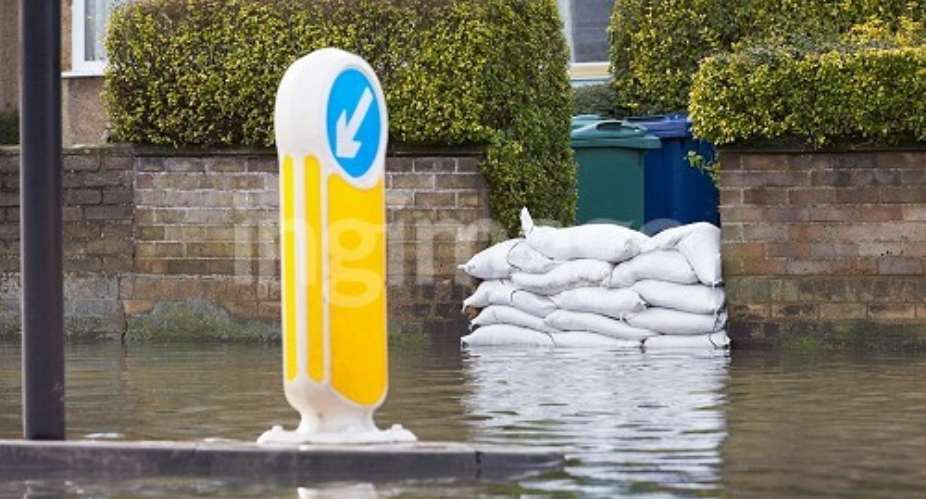Flooding is one of man’s eternal enemies. The United Nations Office for Disaster Risk Reduction ( UNODR ) attributes flooding as one of the biggest natural disasters in the world, with 121 floods occurring worldwide in 2012.
Ghana is not left out, and Accra, one of the lowest lying areas in the country, has been deeply affected this year. To some extent, there are ways residents can flood proof their homes, albeit with the help of a planner, engineer and architect. Real estate expert Lamudi provides a list of five techniques to flood proof your home.
Elevate the foundation level
This is very important for properties in low lying areas or located in flood prone zones. If you have plans of building your home, the land area should be filled to above the depth of flooding with earthen fill material. This is typically one foot above the desired flood proof height. After, you should ensure that your building’s foundation level is elevated to a height higher than the regular level.
Build on columns
Building on columns is another great way to flood proof your home. This is especially important in areas that experience flood levels higher than four feet. The building is elevated to a height that prevents water from running in. For this type of construction, a mound should be built in front of the passageway leading to your home’s entry.
Construct barriers
Creating barriers is another effective way to reduce flooding. Sand bags can be used, for instance, as they absorb water well. It probably will be a good idea to stockpile a few of these bags in case of a flood .
Earthen berms
Earthen berms are freestanding structures located around a building to prevent flood water from entering the compound. These can be constructed with earthen material such as sand and demand the design of closures to prevent the runoff of floodwaters on entryways. Berms are suitable for areas that have floodwaters less than six feet deep.
Other Expert Advice
The flood proofing techniques listed above are not ultimate solutions to Accra’s problem. The city needs a holistic approach to address the situation. Part of the reason Accra could be experiencing a rise in floods is the increase in asphalt and concrete slabs. According to engineering experts, asphalt and concrete increase the incidence of runoff from rainwater, causing flooding. A solution to this is the establishment of more parks to absorb excess water from the rains.
Building on waterways should be discouraged and officials should ensure such lands are not demarcated for residential use. The minimum distance from a water body, according to a city planning expert should be 50 meters. A cleaner environment will also reduce the risk of flooding, while drains should as much as possible be covered to prevent debris from entering.





 Akufo-Addo spotted ordering chiefs to stand for his handshake
Akufo-Addo spotted ordering chiefs to stand for his handshake
 Akufo-Addo ‘disrespects’ every chief in Ghana except Okyenhene — NDC Communicato...
Akufo-Addo ‘disrespects’ every chief in Ghana except Okyenhene — NDC Communicato...
 Supreme Court clears way for dual citizens to hold key public positions
Supreme Court clears way for dual citizens to hold key public positions
 Be transparent, don’t suppress the truth – Prof. Opoku-Agyemang to Jean Mensa
Be transparent, don’t suppress the truth – Prof. Opoku-Agyemang to Jean Mensa
 ‘I won’t tell the world I was only a driver’s mate during challenges’ – Prof Jan...
‘I won’t tell the world I was only a driver’s mate during challenges’ – Prof Jan...
 We’ll prosecute corrupt officials of Akufo-Addo’s govt – Prof Jane Naana
We’ll prosecute corrupt officials of Akufo-Addo’s govt – Prof Jane Naana
 [Full text] Acceptance speech by Prof Jane Naana Opoku-Agyemang as 2024 NDC Runn...
[Full text] Acceptance speech by Prof Jane Naana Opoku-Agyemang as 2024 NDC Runn...
 Election 2024: Don’t be complacent, we haven’t won yet – Asiedu Nketia cautions ...
Election 2024: Don’t be complacent, we haven’t won yet – Asiedu Nketia cautions ...
 Election 2024: Stop fighting over positions in Mahama’s next govt – Asiedu Nketi...
Election 2024: Stop fighting over positions in Mahama’s next govt – Asiedu Nketi...
 Prof Jane Naana Opoku-Agyemang will restore dignity of vice presidency – Fifi Kw...
Prof Jane Naana Opoku-Agyemang will restore dignity of vice presidency – Fifi Kw...
